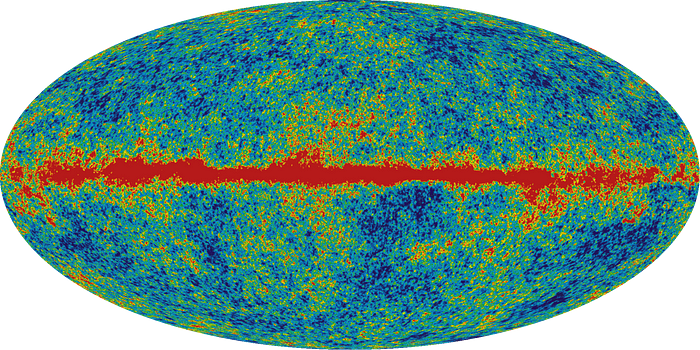The universe is a vast and mysterious place, full of things that we still don’t fully understand. From the strange behavior of dark matter and dark energy, to the bizarre properties of black holes, there are many unexplained mysteries in the cosmos that continue to elude scientists and researchers.

One of the biggest mysteries in the universe is the nature of dark matter. This mysterious substance makes up about 27% of the total mass of the universe, but we don’t know what it is made of or how it behaves. Scientists believe that it is a type of particle that interacts only through gravity, but they have yet to identify it or find any direct evidence of its existence.
Another mystery is the nature of dark energy, which is thought to be responsible for the accelerating expansion of the universe. Scientists believe that this mysterious force is causing the universe to expand at an increasingly faster rate, but they have no idea what it is or how it works.
Black holes are another mysterious feature of the universe. These incredibly dense objects are created when massive stars collapse in on themselves, creating a singularity that is so dense that not even light can escape its gravitational pull. Black holes are some of the most extreme objects in the universe, and scientists are still trying to understand how they form and how they affect the surrounding matter.
The Fermi Paradox
The Fermi Paradox is a paradoxical question that arises from the apparent contradiction between the high probability of the existence of extraterrestrial civilizations and the lack of evidence for their existence. The paradox is named after physicist Enrico Fermi, who is credited with first raising the question.
The basic premise of the Fermi Paradox is that the universe is vast and old, and it is estimated that there could be millions of habitable planets in our own Milky Way galaxy alone. Given the age of the universe and the number of potential habitable planets, it seems likely that at least some of these planets would have developed intelligent life that is capable of reaching out into the cosmos.

However, despite decades of searching, we have not yet detected any signs of extraterrestrial civilizations. This paradox raises questions about the likelihood of the evolution of intelligent life, and whether or not we are alone in the universe.
There are several proposed solutions to the Fermi Paradox, including the idea that intelligent life is rare, that it has not yet had time to reach out to us, or that it has reached out to us but we have not yet detected it. Some scientists have also suggested that it is possible that we are the first intelligent civilization to arise in the universe, or that there are other factors that are preventing the development of intelligent life on other planets.
The Fermi Paradox continues to be a subject of fascination and speculation, and it remains one of the most enduring mysteries of the universe.
The Great Attractor
The Great Attractor is a mysterious force that is causing our Milky Way galaxy and many others to move towards a specific point in space. This point is located about 250 million light-years away from Earth, in the direction of the constellation Hydra. Scientists first discovered the Great Attractor in the 1970s, when they observed that the motion of galaxies in a large region of space seemed to be converging towards a specific point.
The Great Attractor is thought to be a massive, unseen object that is causing this gravitational pull. Some scientists have suggested that it could be a supermassive black hole, or a dense concentration of dark matter. However, no one has yet been able to directly observe the Great Attractor, and its nature remains a mystery.

The existence of the Great Attractor raises many questions about the large-scale structure of the universe and the distribution of mass within it. Some scientists have suggested that the Great Attractor could be a massive galaxy cluster, or that it could be a region of the universe where the density of matter is much higher than average.
Despite decades of research, the Great Attractor remains one of the most mysterious and unexplained phenomena in the universe. Scientists are continuing to study it and other large-scale structures in the universe in order to better understand the distribution of mass and the evolution of the cosmos.
The Cosmic Microwave Background Radiation
The Cosmic Microwave Background Radiation (CMB) is a faint radiation that can be detected throughout the universe. It is thought to be the radiation that was left over from the Big Bang, and it is the oldest light in the universe, dating back to around 380,000 years after the Big Bang.
The CMB has been a key source of information for scientists studying the early universe. By studying the properties of the CMB, such as its temperature and intensity, scientists have been able to learn about the conditions in the early universe and how it evolved over time.

One of the mysteries surrounding the CMB is the observation of patterns in the radiation that scientists can’t fully explain. These patterns, known as anisotropies, suggest that there may be structures or processes in the early universe that we don’t fully understand.
Another mystery is the role that dark matter and dark energy may have played in the early universe. Scientists believe that these mysterious substances make up a large fraction of the mass of the universe, but we don’t know what they are made of or how they behave. It is possible that the CMB could provide clues about the nature of these substances, but so far we have not been able to fully explain their effects on the early universe.
The Pioneer Anomaly
The Pioneer Anomaly is a mystery that was first discovered in the 1980s, when scientists observed that the Pioneer spacecraft, which were launched in the 1970s to study the outer solar system, were slowing down slightly as they traveled through deep space.
The anomaly was first noticed when scientists noticed that the Pioneer 10 and Pioneer 11 spacecraft, which were launched in 1972 and 1973 respectively, were not following their expected trajectories. When they looked more closely at the data, they found that the spacecraft were experiencing a small but unexplained deceleration, as if they were being slowed down by some unknown force.

Several theories have been proposed to explain the Pioneer Anomaly, including the idea that the spacecraft were being affected by a previously unknown physical effect, or that there was something wrong with the spacecraft’s propulsion systems. However, none of these theories have been able to fully explain the anomaly, and it remains an active area of research.
In recent years, scientists have proposed new explanations for the Pioneer Anomaly, such as the idea that the spacecraft were being affected by the gravitational pull of a small object in the outer solar system, or that they were being affected by a previously unknown force of nature. However, these theories are still being tested, and the true cause of the anomaly remains unknown.
The Kuiper Cliff
The Kuiper Cliff is a mysterious feature of the Kuiper Belt, a region of the solar system beyond Neptune that is home to a large number of small, icy objects known as Kuiper Belt Objects (KBOs). The Kuiper Belt is believed to be the source of comets that we see in the inner solar system, and it is thought to be composed of leftovers from the formation of the solar system.
The Kuiper Cliff is a sharp drop-off in the number of KBOs that is observed at a distance of about 50 astronomical units (AU) from the sun. An astronomical unit is the average distance from the Earth to the sun, which is about 93 million miles. The drop-off is thought to be the result of the gravitational influence of Neptune, which is believed to have scattered many of the KBOs in the region when it formed.

The Kuiper Cliff is an important mystery because it could provide clues about the early solar system and the formation of the outer planets. Scientists believe that the Kuiper Belt is a relic of the early solar system, and studying it could help us understand how the solar system evolved over time.
However, the Kuiper Cliff remains poorly understood, and there are many mysteries surrounding the region. For example, scientists are still trying to understand why the Kuiper Belt has such a sharp drop-off in the number of KBOs, and whether or not this is related to the formation of the outer planets.
There are also many mysteries related to the birth and evolution of the universe itself. Scientists believe that the universe began with the Big Bang, but they still don’t fully understand how this event occurred or what caused it. They also don’t know what happened during the first few moments of the universe’s existence, or how the various structures in the universe, such as galaxies and stars, formed.
These are just a few of the many mysteries of the universe that remain unexplained. From the behavior of dark matter and dark energy, to the properties of black holes, the cosmos is full of mysteries that continue to puzzle scientists and researchers. But with advances in technology and the continued pursuit of knowledge, we may one day be able to unlock the secrets of the universe and better understand our place in the cosmos.
I kindly invite you to follow me — If you don’t feel such a need, then leave something behind you — a comment or some claps, perhaps. Thank you!










